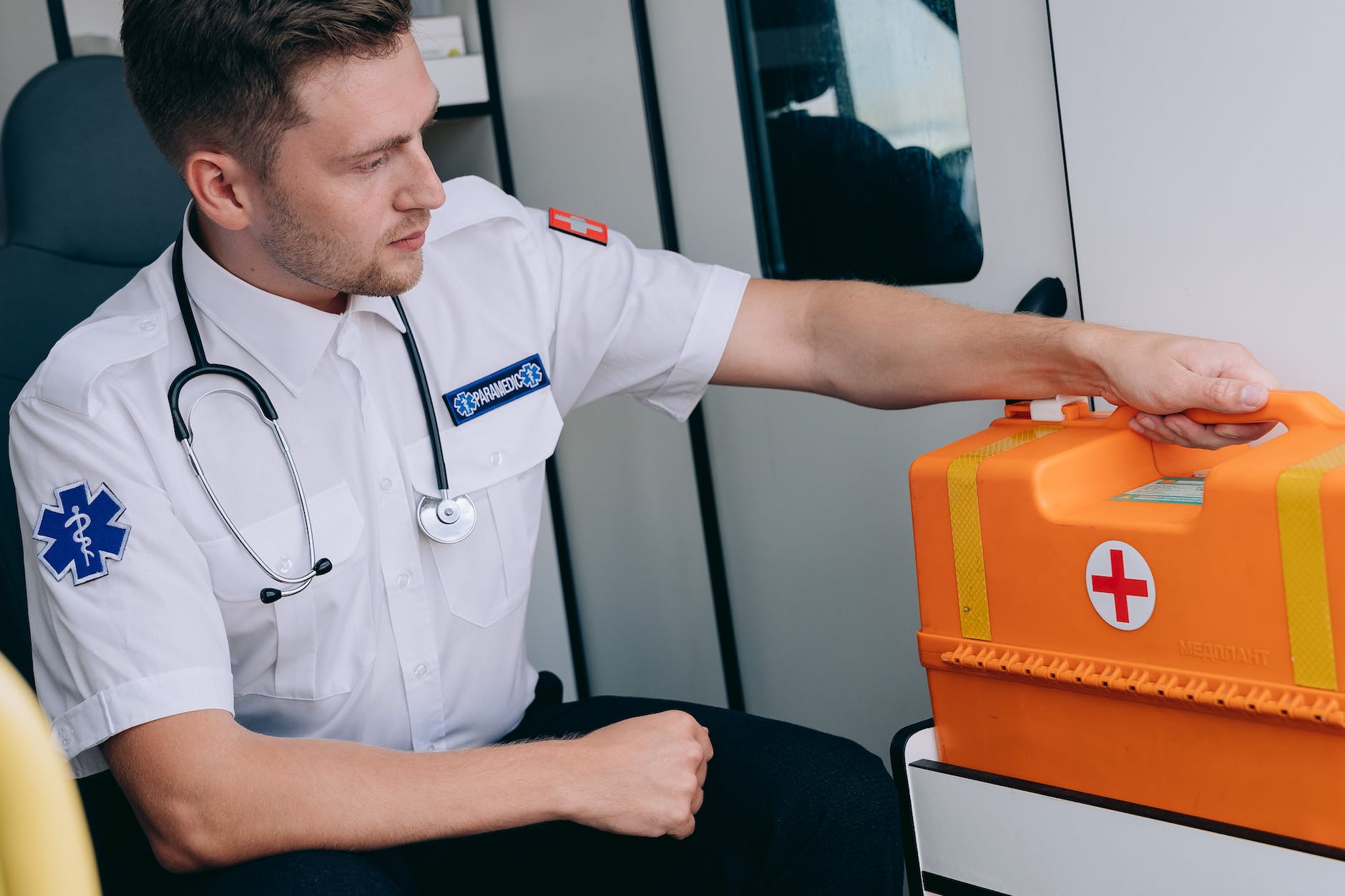
First Aid: Kits, CPR, and Emergency Response
Introduction
First aid is a crucial aspect of workplace safety, providing immediate care to individuals who have sustained injuries or illnesses. This article explores the importance of well-equipped first aid kits, the significance of CPR (Cardiopulmonary Resuscitation), and the essential components of effective emergency response in the workplace.
First Aid Kits: Essentials and Importance
- Basic Supplies
- Inclusion of bandages, adhesive tapes, sterile gauze, antiseptic wipes, and scissors
- Basic supplies for addressing minor cuts, wounds, and injuries in the workplace
- Specialized Items
- Additional items like tweezers, instant cold packs, and burn ointments
- Catering to a range of potential injuries or health issues that may occur
- Personal Protective Equipment (PPE)
- Gloves and face masks as essential PPE in first aid kits
- Ensuring the safety of both the person providing aid and the individual receiving it
- Location and Accessibility
- Placement of first aid kits in easily accessible and visible locations
- Quick access to kits during emergencies to minimize response time
- Regular Inspection and Restocking
- Routine checks to ensure all supplies are current and undamaged
- Regular restocking to maintain the readiness of first aid kits
Cardiopulmonary Resuscitation (CPR): Training and Implementation
- CPR Training Programs
- Participation in certified CPR training programs for designated personnel
- Ensuring that individuals are well-equipped to perform CPR in emergency situations
- Early Recognition of Cardiac Arrest
- Education on recognizing signs of cardiac arrest
- Prompt initiation of CPR in the absence of professional medical help
- Effective Chest Compressions
- Emphasis on the importance of effective chest compressions
- Maintaining a proper compression-to-ventilation ratio for optimal outcomes
- Use of Automated External Defibrillators (AEDs)
- Training on the proper use of AEDs in conjunction with CPR
- Enhancing the chances of successful resuscitation in cases of sudden cardiac arrest
- Refresher Courses
- Regular refresher courses for individuals with CPR certification
- Keeping skills up-to-date and addressing any changes in CPR guidelines
Emergency Response Protocols
- Establishment of Emergency Response Teams
- Formation of dedicated teams trained in emergency response
- Assigning specific roles and responsibilities to team members
- Communication Strategies
- Clear communication channels during emergencies
- Efficient dissemination of information to relevant personnel and emergency services
- Evacuation Plans
- Development and communication of evacuation plans
- Ensuring that employees are familiar with evacuation routes and assembly points
- Coordination with Emergency Services
- Establishing protocols for coordination with external emergency services
- Facilitating a seamless transition from initial response to professional medical assistance
- Post-Incident Debriefing
- Conducting debriefing sessions after emergency incidents
- Reviewing response effectiveness and identifying areas for improvement
Conclusion
In conclusion, a comprehensive approach to first aid involves well-equipped kits, CPR training, and effective emergency response protocols. By prioritizing the accessibility and readiness of first aid kits, providing CPR training to designated personnel, and establishing robust emergency response procedures, organizations can create a safer work environment and enhance the well-being of employees.
Mental Health in the Workplace: Addressing Psychological Safety as a Safety Officer
Safety Inspections: A Step-by-Step Guide for Safety Officers
Implementing and Evaluating Safety Training Programs for Employees
Occupational Health and Safety Trends: Staying Ahead as a Safety Officer
Emergency Response Planning: Best Practices for Safety Officers
Frequently Asked Questions (FAQs)
- What are the essentials of a first aid kit in the workplace?
- First aid kit essentials include basic supplies like bandages, adhesive tapes, sterile gauze, antiseptic wipes, and scissors. Specialized items such as tweezers, instant cold packs, burn ointments, and personal protective equipment (PPE) like gloves and face masks are also important.
- Why is CPR training important in the workplace?
- CPR training is crucial in the workplace as it empowers designated personnel to provide immediate and effective cardiopulmonary resuscitation in emergency situations, increasing the chances of survival for individuals experiencing cardiac arrest.
- What should be emphasized in CPR training programs?
- CPR training programs should emphasize early recognition of cardiac arrest, effective chest compressions, the use of automated external defibrillators (AEDs), and regular refresher courses to keep skills up-to-date.
- What are the key components of emergency response protocols in the workplace?
- Key components of emergency response protocols include the establishment of emergency response teams, clear communication strategies, evacuation plans, coordination with emergency services, and post-incident debriefing sessions to review response effectiveness.
- Why is regular inspection and restocking of first aid kits important?
- Regular inspection and restocking of first aid kits are important to ensure that all supplies are current and undamaged, maintaining the readiness of the kits for quick and effective response during emergencies.
























